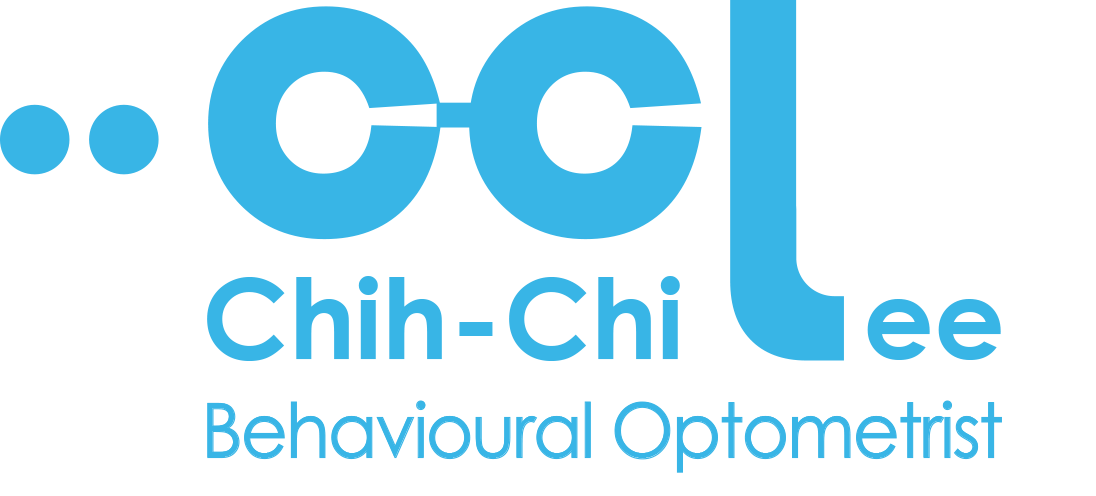Research Evidence for Behavioural Optometry
Vision and Learning
Eden GF, (1994) Differences in eye movements and reading problems in dyslexic and normal children.. Vision Res. 1994 May;34(10):1345-58.
Mitchell Scheiman* OD PhD, (2018) Effect of treatment of symptomatic convergence insufficiency on reading in children: a pilot study. Clin Exp Optom 2018; 101: 585–593 DOI:10.1111/cxo.12682
Elisabeth Moores (2011) Adults with dyslexia exhibit large effects of crowding, increased dependence on cues, and detrimental effects of distractors in visual search tasks. Neuropsychologia 49 (2011) 3881–3890
Simone Gori (2015) How the visual aspects can be crucial in reading acquisition:
The intriguing case of crowding and developmental dyslexia. Journal of Vision (2015) 15:(1)8 1-20
Eye Focussing / Eye Teaming Skills
Weisz, D. L. (1979) Clinical therapy for accommodative responses: transfer effects upon performance. J. Am. Optom. Assoc.50, 209–216
Hoffman, L. G. (1982) The effect of accommodative deficiencies on the developmental level of perceptual skills. Am. J. Optom. Physiol. Opt. 59,254–262
Aziz, S., Cleary, M., Stewart, H. K. and Weir, C. R. (2006) Are orthoptic exercises an effective treatment for convergence and fusion deficiencies? Strabismus 14,183–189.
Rouse, M. W. (1987) Management of binocular anomalies: efficacy of vision therapy in the treatment of accommodative deficiencies. Am. J. Optom. Physiol. Opt. 64,415–420
Grisham, J. D., Bowman, M. C., Owyang, L. A. and Chan, C.L. (1991) Vergence orthoptics: validity and persistence of the training effect. Optom. Vis. Sci.68,441–451
Sterner, B., Abrahamsson, M. and Sjostrom, A. (1999). Accommodative facility training with a long term follow up in a sample of school aged children showing accommodative dysfunction. Doc. Ophthalmol. 99,93–101
Ciuffreda, K. J. (2002) The scientific basis for and efficacy of optometric vision therapy in nonstrabismic accommodative and vergence disorders. Optometry 73,735–762
Cooper, J., Feldman, J., Selenow, A., Fair, R., Buccerio, F., MacDonald, D. and Levy, M. (1987) Reduction of asthenopia after accommodative facility training. Am. J. Optom. Physiol. Opt. 64,430–436.
Sterner, B., Abrahamsson, M. and Sjostrom, A. (2001) The effects of accommodative facility training on a group of children with impaired relative accommodation – a comparison between dioptric treatment and sham treatment. Ophthalmic Physiol. Opt. 21,470–476
Brautaset, R., Wahlberg, M., Abdi, S. and Pansell, T. (2008). Accommodation insufficiency in children: are exercises better than reading glasses? Strabismus 16,65–69
Scheiman M, Cotter S, Kulp MT, Mitchell GL, Cooper J, Gallaway M, Hopkins KB, Bartuccio M, Chung I; Convergence Insufficiency Treatment Trial Study Group. Treatment of accommodative dysfunction in children: results from a randomized clinical trial. Optom Vis Sci. 2011 Nov;88(11):1343-52. doi:0.1097/OPX.0b013e31822f4d7c.
Scheiman M et al. Treatment of accommodative insufficiency in children:results from a randomized clinical trial. Optom Vis Sci. 2011 Nov;88(11):1343-52
Other Journal Articles
Razuk M, (2018) Effect of colored filters on reading capabilities in
dyslexic children. Res Dev Disabil. 2018 Dec;83:1-7. doi:10.1016/j.ridd.2018.07.006. Epub 2018 Jul 23.
Genís Cardona, (2009) A placebo-controlled trial of tinted lenses in adolescents
with good and poor academic performance: reading accuracy
and speed. J Optom. 2010;3(2):94-101
